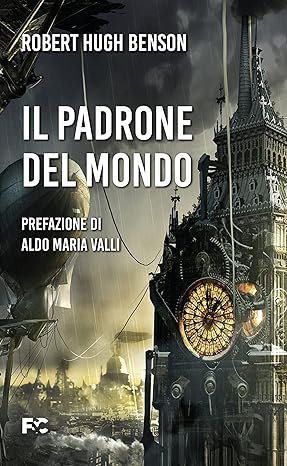Monsignor Viganò: “The cancel culture is also inside the Church”
Declaration regarding the apostolic letter Desiderio desideravi
by monsignor Carlo Maria Viganò
In an editorial titled “Cancel Culture: The Eternal Gnostic Dream of Starting Over from Zero,” that appeared on June 30, 2022, in the Bulletin of Social Doctrine of the Church of the Cardinal Van Thuân International Observatory (here), Archbishop Giampaolo Crepaldi stigmatized, with great clarity of analysis, the “attitude that favors the new over the old, which makes virtue coincide with adhesion to historical novelties and sin coincide with the preservation of the past,” and which consists in a systematic and ruthless damnatio memoriae of all that is opposed to modernity. The Archbishop of Trieste writes: “Progress wants everything to change except for progress itself, which must remain. Progress must preserve progress as something incontestable and never able to be criticized, never surmountable, never erasable. The same may be said of the revolution: revolutions change everything except for the immutable reality of the revolution, which remains absolute. Likewise, “cancellation” must cancel everything, but cancellation must remain an absolute principle.”
This denunciation highlights the return of anti-Christian gnosis, which not coincidentally is an ally “of the Enlightenment and anti-religious propaganda of the English-speaking Protestant bourgeoisie,” the fruit of “centuries of planned disinformation.” From the Lutheran pseudo-reform onward, the unity of Catholic Europe was broken apart by the heresy of the German monk and the Anglican schism, unequivocally demonstrating how civil revolutions (which we could define as political heresies) find their ideological basis in previous doctrinal and moral errors.
Archbishop Crepaldi’s courageous examination limits itself, at least apparently, to Cancel culture in civil society, while overlooking the no less serious one that has been pursued with tetragonal obstinacy in the very heart of the Catholic Church, beginning with Second Vatican Council. This confirms that the apostasy of the Christian nations, which has systematically eliminated any trace of Christianity from the social body, necessarily had to be preceded by a similar removal of the past from the ecclesial body, to which it was necessary to accompany the imposition of the new as ontologically better and morally superior, regardless of its basis, that is, regardless of the intentions of those who imposed it and above all regardless of any evaluation of its consequences. Saint Pius X defined Modernism as the heresy that derives from this philosophical error. Whatever is new is considered an absolute good simply because it is new. And this despite the evidence of the disastrous effects that the cancellation of the past in the Church would cause – on the doctrinal, moral, liturgical, and disciplinary levels, but also on the cultural, artistic, and popular level as well – as predictably happened.
The Council erected novelty and so-called progress as a norm, but it did not limit itself to this: its architects had to cancel the past, because a simple comparison between novus and vetus repudiates any idea that the new is good and the old is to be condemned, due to the results of each. The liturgical reform itself was “planned disinformation”: first of all because it was imposed on the basis of a specious lie, that is, that the faithful did not understand the celebration of the rites in Latin; and secondly because of the fact that the lex orandi became the expression of a lex credendi that was deliberately unmoored from Catholic orthodoxy, and indeed actively negated it. The principal instrument of the progressivist propaganda and of Cancel culture that was applied in the ecclesial sphere was the reformed liturgy, just as was done by the Lutheran pseudo-reform, which progressively eliminated from the Christian people the inheritance of Faith, traditions, and daily gestures which centuries of lived Catholicism had impregnated into the life of the faithful and of nations.
Cancel culture is inevitable wherever what is new must be accepted uncritically, and where what is ancient – dismissed as being “old” – must be forgotten so that it does not hang over the present as a severe warning. And it is not a coincidence if George Orwell’s novel 1984 foretold the censorship of information ex post, after the fact, making corrections to past news according to its changing utility in the present. On the other hand, the simple presence of a term of comparison, in itself, reveals a difference that stimulates thoughtful judgment, questions the dogma of progress, and reveals treasures of the past that today no one would be capable of replicating, precisely because they were the result of a world that the present rejects a priori.
But if in recent decades the followers of “Catholic progressivism” – an expression that in itself is already an oxymoron – have worked to undermine Tradition and replace it with its antithesis, in these ten years of the Bergoglian “pontificate” cancel culture has taken on the connotations of an ideological fury, ranging from the situation ethics of Amoris Laetitia to the neo-Malthusian ecologism of Laudato Si’ to the masonic ecumenism of Fratelli Tutti, but also manifesting itself in the brazen removal of exterior signs, from liturgical vestments to papal insignia and titles, and even with Traditionis Custodes and Desiderio Desideravi reaching the point of the substantial cancellation of the Apostolic Liturgy, which the Motu Proprio Summorum Pontificum had given a parenthesis of relative liberty after forty years of ostracism.
And it is Cancel culture in all respects, in terms of the method of realization, the purposes it intends, the ideology that underlies it, and the common denominator that unites those who promote it. A subversive operation, certainly, because it uses the authority of the Church for the purpose of destroying the Church, subverting her proper end, just as the authority of the State is usurped against the interests of the Nation and the common good of its citizens.
“Sometimes bringing some of grandma’s lace is ok, but only sometimes. It’s in order to pay homage to grandma, no?” Bergoglio said [while speaking to a group of priests in June]. And he did so with the same irreverent superficiality that someone who is ignorant would show before a great work of art or a literary masterpiece. Or rather, just like someone who knows its value well, but having only trash and junk to offer as an alternative, can only resort to discrediting and derision. Liquidating the inestimable treasures of doctrine and spirituality of the Apostolic Liturgy with simplifications from social media – “grandmother’s lace” – betrays his awareness that he has no arguments and explains the reason for so much intolerance toward something that a person with good faith would be driven to preserve, guard, and understand.
Those who still persist in individually refuting Jorge Mario Bergoglio’s “acts of magisterium and governance” are refusing to take note of a terrible and painful reality, which significantly finds its counterpart in the Western world. A world which, as has always been the case, takes its example from the Church – in the past drawing inspiration from its goodness and today following it in evil. And thus, it is useless to refute this or that document or declaration, being scandalized by what it may represent with respect to Catholic tradition: Cancel culture – as an expression of Gnostic and revolutionary thought – is ontologically the enemy of reason, even before it is an enemy of Faith. And those who denounce the incalculable damages of this criminal operation of removal and condemnation of the past, even by simply demonstrating the disastrous state into which parishes and religious communities have fallen, do not seem to realize that it is precisely these damages that were knowingly pursued. They fall into the same deception as those who, at the time of the psychopandemic, are surprised that in the presence of serious side effects and “sudden illnesses” obviously caused by the experimental serum, health authorities are not forbidding the distribution of the so-called vaccine, when it is obvious that it was intended to reduce the world’s population by 10-15%, as Mr. Gates has explained to us.
In reality, not wanting to consider the relationship between cause and effect is a consequence of the rejection of the entire Western system of logic and philosophy that is essentially Aristotelian and Thomistic. Because a deviant thought can only be accepted in blind irrationality and servile obedience. Even if, in hindsight, the architects of the revolution have a very lucid and logical plan, which however they cannot declare openly since it is subversive and criminal.
Deep church and deep state move in parallel and in sync, because what moves them both is hatred for Jesus Christ. The antichristic matrix resides in deception, which is the mark of the Liar: a deception that began with making Adam and Eve believe that their disobedience would make them similar to God, when in reality they had been created “in the image and likeness of God” precisely in freely conforming to the divine cosmos impressed by the Creator in creatures and in creation. We find the same deception in making us believe that man can deny God and rebel against his Holy Law without consequences, when Satan first of all, sinning through pride, has damned himself for eternity. The myth of liberty, of which license and libertinism are counterfeits, is a lie. The secular state, which denies the Lordship of Christ the King in society, is a lie. Ecumenism, which places the Truth of God on the same level as error in the name of a peace and fraternity that cannot exist outside the one Church of Christ, the Holy Catholic Church, is a lie. It is a lie to have erected progress as an absolute good, because what it considers a good is in reality an evil that affects individuals and society, both secular society and spiritual society. It is a lie to pass off as a victory of popular demand something that an elite of conspirators has decided to impose on the masses, with the sole intent of dominating them and leading them to perdition.
This is why, in the face of all the Bergoglian nonsense, which celebrates as beyond dispute the successes of Vatican II and the conquests of the post-conciliar church despite the presence of a huge crisis, any comment is superfluous. What is sold to us as the latest discovery of modernity – from gender ideology to neo-Malthusian health ideology – is old ideological rubbish whose only purpose is to distance souls from God, so that the adage “misery loves company” becomes an apt summary of the evil action of the devil, who is envious that creatures endowed with a soul and body have been granted by Providence the Redemption that the angels, as pure spirits, were not granted. A Redemption accomplished by means of the Incarnation of the Second Person of the Most Holy Trinity, perpetuated in its fruits by the Mystical Body of Christ, the Holy Church.
Bergoglio accuses people of Gnosticism and Pelagianism if they cannot accept the idea of a Gnostic and Pelagian pope, for whom the good does not consist in conforming oneself to the model of perfection intended for us by God the Creator and Redeemer, but rather in doing whatever each one of us believes is good. But this is, after all, nothing other than the sin of Lucifer, setting up his Non Serviam as a moral rule.
Archbishop Crepaldi did well to point out the antichristic matrix of the Cancel culture. But this analysis, which is valid and true regarding what is happening in the civil world, must also be courageously extended to the Catholic world, in which the same antichristic matrix has existed uncontested ever since the Second Vatican Council made an idol out of the new and transient, denying two thousand years of Tradition founded on the Word of God and on the teaching of the Apostles and the Roman Pontiffs. The ideological fury of Bergoglio is simply the logical consequence of these premises, and the fact that a massage therapist can design the gay-friendly logo for the 2025 Jubilee (here) is merely the latest dismal confirmation of an ongoing metastasis.
I urge my brothers in the episcopate, the priests and all the faithful to understand this fundamental aspect of the present apostasy, because we will not be able to do any good to convert civil society and restore the royal Crown to Christ as long as that Crown has been usurped by His enemies within the very womb of the Church.
+ Carlo Maria Viganò, Archbishop



